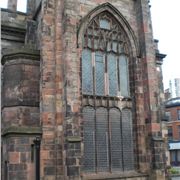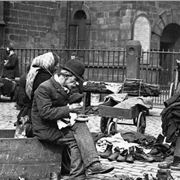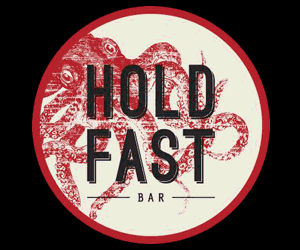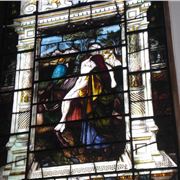EVENT: Friday 20 June, 2014. 7.30pm. £8
Sacred Trinity Church sees a number of top singers and poets perform to raise money for Amnesty Manchester and Musicians Without Borders. The performers include:
- Carwyn Ellis from Colorama
- Michele Stodart from the Magic Numbers
- Cavan Moran
- the Lonesome and Penniless Cowboys
- Chris Flynn
- Kieren King (performance poet).
The performers will perform acoustically to fully utilise the beautiful acoustics of the venue.
This will provide a fine opportunity to enjoy music and support a good cause but also to view this wonderful building.
Manchester and Salford's The Good, The Standard and The Ugly in architecture: Sacred Trinity
Category: Excellent
What and where?
The Sacred Trinity Church, where Blackfriars meets Chapel Street.
When, who and what’s it look like?
The tower which is Gothic in style dates from 1634-35. The rest of the church was rebuilt in 1752-3 in the fashionable Classical style – same as St Ann’s Church from forty years earlier. The architects of Sacred Trinity are unknown. The stone used is that handsome purple pink – almost bruised – local sandstone. The money back in the 1600s was given by Humphrey Booth, a textile manufacturer who had a mansion across the road close to the river. He fought long and hard to get Salford its own church, rather than people having to walk over the bridge to Manchester. The Booth family were one of the most charitable in Manchester’s history and their charities still exist today. Two of the family also became Archbishops of Canterbury. One of the interesting features in the building is a niche said to have been created for a statue of Charles I. This gives a hint to the name.
Isn’t the church name just a normal one?
The use of the word ‘sacred’ in a church name is almost always Roman Catholic, there are no other Anglican churches which use it, apart from this one. But then this place is part of the Anglo-Catholic, High Church, tradition in the Church of England. The name stems from the religious conflicts of the mid-1600s. The puritans hated the word 'sacred', thinking it Popish idolatry. Manchester tended to the Low Church way of thinking and and puritanism (although the Cathedral has always been High Church, which is confusing). Salford’s first place of worship was sticking a religious two fingers up to the puritans with its name.
Isn’t the completion date of 1635 close to the English Civil War?
It’s seven years away from the outbreak of hostilities in 1642. Salford and Sacred Trinity supported Charles I and the Royalists – which may explain a mysterious royal court of arms in the nave roof. Manchester was the first town to be besieged in the war and it fought for Parliament. The Royalist forces attacked from over Salford Bridge - they would have assembled round Sacred Trinity and worshipped here. When the siege was lifted and the Parliamentary side emerged as winners, the church and its tombs were damaged by vengeful roundheads.
What's it like inside?
It’s been messed about with to make it more usable. In the eighties the first floor galleries on each side of the nave were glassed in to provide meeting areas. The aisles, apart from a chapel with Lancashire Fusilier flags, have been divided into offices. There are some interesting tombs and some striking stained glass. The church still retains its religious integrity which is something that can’t be described but floats somehow in the ether. And then you get to the saddest thing.
What is the saddest thing? There are some framed panels with text that contain names. I saw them and thought, that must be for the World War One dead. I half-thought that seems a lot for one church and its parish. I found a couple of Schofields. But at home I read the history booklet from the church and was left reeling. It mentions laconically the ‘memorial to the four hundred officers and men of the Salford Battalions of the Lancashire Fusiliers who were killed on the first of July 1916’. That was first day of the Battle of the Somme. Four hundred dead, one day, one town. I’ve seen many memorials to WW1 but none with this scale of devastation. Since the start of the Second Gulf War in 2003, and including the campaign in Afghanistan from 2001, the British Army has lost less than three hundred men. In one day Salford lost four hundred. Ironically up until that time, the Salford Pals, as they were known, had been nicknamed by other troops as ‘God’s Own’ because they’d had so few casualties.
 So what happens here now?
So what happens here now?
People worship here, what do you think? Oh and they also come to rock gigs and club nights and dance away the night with bottles of beer in their hands. Sacred Trinity and St Philips up the road are lucky to have as their vicar the Rev Andy Salmon, pictured below. “How long have people been putting on gigs here,” people ask him shocked by the gigs. “Since 1635,” he replies. Andy realises that for religion to be relevant it must be part of life. Before people started saying 'shush' in churches, naves were used as a public space for traders, jokers, for kids to play in, for people to escape the rain and chat. Andy’s brought back that medieval sense of the church being part of the community. Sacred Trinity has been fortunate in its vicars, one Peter Green was particularly active and well loved: resident from 1902-1911 he did good work in this hard-up parish to relieve distress. He even published a book called: ‘How to deal with Lads’. This was followed by ‘How to deal with Men’.
Didn’t the churchyard used to hold the Flat Iron Market?
Very good. It did. It was a proper rum affair, and named after the way the streets met round here, in a triangle. By the second half of the nineteenth century this area of Salford was dog-poor - ‘the classic slum’ as Robert Roberts would write – and the market was a flea market. The best description is from The Manchester Guardian by Jack Yeats in 1906 – click here. This is one excerpt: ‘The market is the hunting-park of the bargain hunters who want, or think they want, or imagine that they may some day want - a rusty old cavalry sword, or a pair of skates, or a bunch of curtain rings, or a pair of half-wellington boots, or a toy engine, or a bank of cord, green or red, or a little round looking-glass, or a pair of cork soles, or a bunch of old keys, or an old rusty lock, or a pink ice-cream, or a handful of hot chestnuts, or a small but cheerfully coloured copy of "The Angelus", or a fuzzy toy animal, or a bottle of medicine that'll cure anything that can be found in a medical dictionary, or a "gigantic penny packet" of notepaper, or a roll of oil-cloth, or a pair of stays - for a penny.’ There was sport too.
 Go on.
Go on.
To quote the Manchester Guardian again: ‘Then there is "The Paralizer," in a tent with netted sides and top, and goal-posts at the far end, with a goalkeeper in a blue shirt. Here you pay an entrance fee, and if you are clever you kick a goal and receive a cash reward, thereby, no doubt, imperilling your pure amateur status for ever. But the goalkeeper is strong and nimble and stops more balls than he lets go by him. A young man might easily stand in front of this goalkeeper and kick away all his spare change and borrow from his friends till he broke them, and when they left him he might, if allowed to kick on credit, stand there till he kicked away his inheritance, and until the copper-bag of the lady with the red motor-cap, who takes the money, became stuffed with I O U's.’










